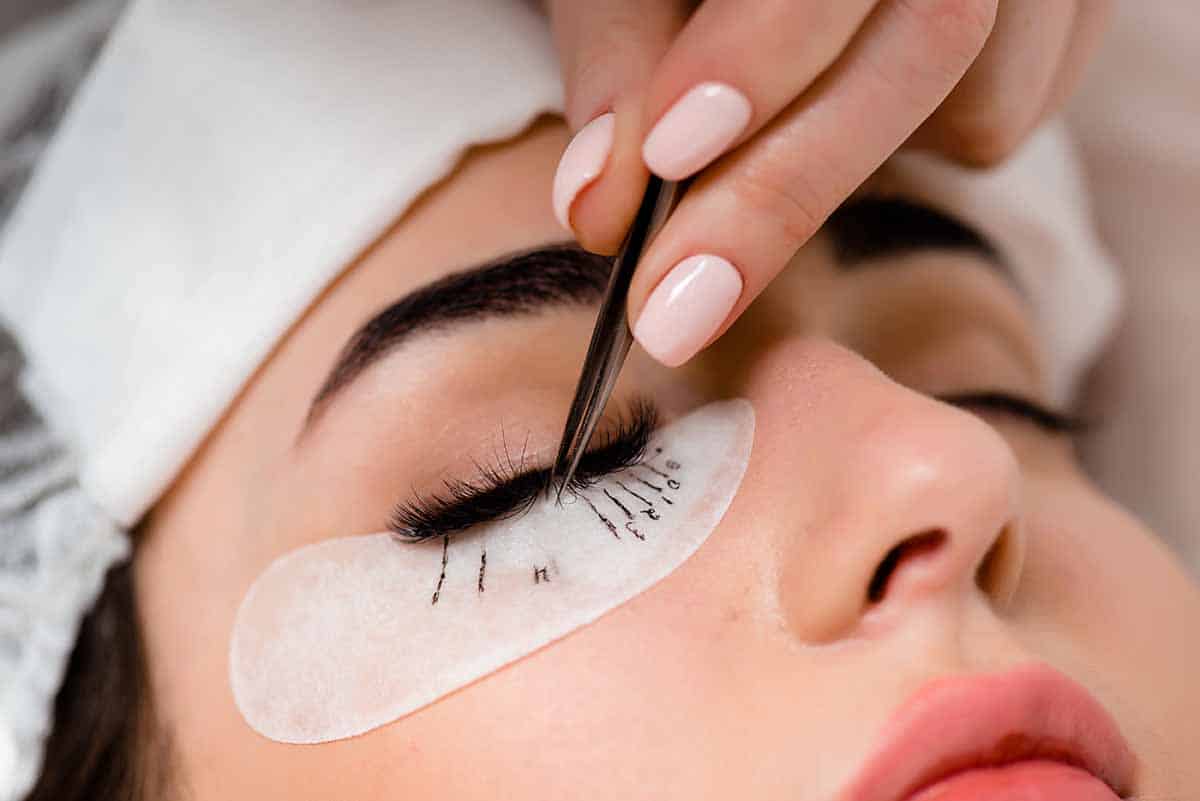10 Steps to Start Your Own Nail Technician Business

Have you ever wondered what it would take to open your own nail technician business? The thought has probably crossed your mind if you’re reading this. Maybe you’re not sure if this is the right option yet, or don’t know the best way to approach it, and want to know what all is involved in opening a nail technician business.
These are just a few elements to opening your business. It can be tough working as an employee in the nail industry. Depending on the company you work for, creativity may be limited. Starting your own business might seem like a great alternative. Sound daunting? Opening a business, in general, can seem like an intimidating prospect, but in reality, it’s simpler than you might think. This article will break down the process into 10 clear-cut steps.
How Do I Start My Own Nail Technician Business?
Opening your own nail technician business will involve a few key steps, including:
- Become licensed as a nail technician
- Writing a business proposal
- Obtaining a business license
- Developing a marketing strategy
In general, the overall approach you take to opening any business is very similar. If you are focusing on becoming a nail technician you can learn this by checking out the best certified nail technician courses online. However, the key differences often lie in the individual steps one might take. For example, opening a bar vs. opening a nail technician business would look at different things in an area, including venue and population demographics. They would also need different supplies.
Keep in mind that while it’s important to know how to run a business, make sure you are especially well-versed in how to run your business. Because it is unique to you, and theoretical is different than reality oftentimes. That’s why we’ve broken down the process of owning/opening a nail technician business into manageable chunks in this article.
(Follow the link to learn about the things every nail technician should have.)
10 Steps to Start Your Own Nail Technician Business
Not knowing where to start shouldn’t be the reason for you not to open your nail technician business. Even though it is overwhelming, taking it bit by bit will make your dream come true that much easier. So, let’s go one step at a time and walk through what it would look like to make your dream a reality.
1. Get Licensed as a Nail Technician
If you’re brand-new to the industry, you may not have known that you needed a license to operate as a nail technician. Which is why becoming a certified nail technician is step 1, and potentially the most crucial step to starting your own nail technician business.
If you intend to work as a nail tech yourself, you want to get started on licensing right away. If you’re already licensed as a nail technician, great! You’re ahead of the game, and you can skip this step. In addition, if you don’t intend to work as a nail technician at your business, you can also skip this step.
Licensing can take several months to a year (and sometimes even longer). Usually, you can be done within a year, two at the most. Much of it depends on your state, and the requirements to become licensed. Some require you to attend a beauty school while others will accept apprenticeships or a hybrid. You can find out more information about your particular state’s specific requirements using this link.
2. Decide What Services Will Be Offered
Every nail salon is unique. Part of what will set you apart from the crowd is the services you will offer. Beyond the basic manicures and pedicures, there’s a host of other services that you can choose from, including:
- Extensions: Acrylic vs. Gel
- Extension Repairs or Removal
- Nail Polish: Standard, Shellac, and Gel
- Foot Spa treatments
- SNS Nails
- Hand Massage
You can find more services commonly offered using this link. Much of your selection will likely be based on cost as well as the skill-sets of the technicians in your employment, although demand is also a factor to consider. It may be a good idea to start with the basic manicure and work your way up from there.
3. Pick a Location or Freelance
If you don’t already have a location in mind, now is the time to brainstorm. This can be one of the most enjoyable parts of opening your business and still incredibly important. The survival of your business can often hinge on its location, but don’t let that dampen your spirit!
Here’s a list to help you with brainstorming:
- Write out all of those places that may seem impossible (nothing is impossible, okay?)
- Include places you’re very familiar with
- If you’re able to, scout out these areas to determine if they’d be a good venue
- Research, research, research. The internet gives you access to all sorts of information about a town or a city, including population demographics and other businesses present.
Once you have a town/city selected, look for available buildings for sale or rent, depending on the route that you’re taking. Check into the costs associated with the venue. You may also want to consider getting an interior designer to make your venue look fabulous! (If you want to do the interior design yourself, you may want to check out these interior design courses online!)
If you plan on running a freelance nail technician service, you may be able to skip this step. Keep in mind that means that you would need to travel to clients, or open up space in your home to have them come to you. Be sure to check into the business regulations specific to where you live before freelancing out of your home to avoid any incurred legal fees.
4. Write and Propose Business Plan
Step 4 is an essential step for step 5. In it, you will define the goals of your business and how you will achieve them. This is not only helpful to you, as the business owner, in solidifying your vision, but also to lenders or investors interested in your business.
In your business plan, you will go over marketing strategies, as well as financial and operational costs and expected returns. This plan is a great tool to use as a reference in the future to help keep you on track. This is also a good time to work out an estimated budget as well.
When writing your plan, it can feel intimidating. However, there are many helpful resources (like this series on writing great business plans) that will help you along your way. Make sure you set yourself apart by highlighting your unique qualities as a nail technician business, and how you can be an asset entering the industry.
5. Secure a Loan
If you’ve completed the last step and created an outstanding business plan, you can now move on to securing your first business loan! For this, you will primarily have to do much of your own research into lenders in your area. However, some important factors in deciding what lender to go with include:
- Loan amount
- Loan Fees
- Interest Rates
- Repayment Schedule
There are also different types of loans for businesses, so be sure to investigate what type is right for you. These are primarily separated into two categories, loans for good credit vs. bad credit. The table below represents some common characteristics of each.
Good Credit Loans | Bad Credit Loans |
Long repayment terms | Compromise on Terms |
Low-interest rates | Elevated interest rates |
Potential for revolving credit | Loan fees/hidden charges/collateral |
Examples: | Examples: |
SBA loans, Microloans, Term loans, Real estate loans | Equipment financing, merchant cash advances, invoice financing |
What type of loan you decide to get will be based on what you’re using it for. In starting up a business, you will likely be pursuing a real estate loan. On the other hand, the type of loan you can get will largely depend on your credit score. While you can easily snag bad credit loans, they often come with expensive price-tags in terms of interest rates. Instead, I advise working on building your credit in advance to avoid additionally incurred costs.
6. Apply for a Business Loan
The U.S. Small Business Administration (SBA) has all the information you will need to secure a business license for your nail technician business. You can check out requirements in your area using this link. You will likely need a combination of licenses & permits. This might be from the federal and/ state levels. Be sure to start the process early to ensure you can stay on track.
Be sure not to overlook this step. Failing to insure your business can have costly repercussions. Insuring your business ranges from liability to property insurance. Beyond natural disasters, accidents and other incidents happen. Make sure you protect the business you’re working so hard to build.
Even if you’re beginning your business from your home, you should still be insured. Check with your home insurance agency to include additional insurance, covering the equipment and supplies that you’ve purchased to start your business.
8. Purchase Supplies
A well-equipped nail salon comes with a hefty price-tag. Be sure that you’ve adequately covered yourself in step 5. Many of the supplies you will need are often taken for granted, but may actually cost the most. Thankfully, much of these are simply start-up costs, and won’t need to be repurchased for a number of years if properly maintained.
Here is a glimpse of some of the items you will need to purchase routinely:
- Nail Polish Remover
- Brushes
- Nail Polish
- Blocks, Files, and Buffers
- Nail Scissors
These supplies are initial investments:
- UV and LED Lamps
- Salon Chairs
- Nail Stations
- Desks
- Decorations
- Chairs (for waiting)
Make sure you research and invest in supplies that are quality and have longevity, to minimize your costs long-term. Be sure to purchase supplies for the services you are providing, and avoid buying items for services you aren’t offering (even if you think you may, somewhere down the road).
9. Scout Employees
Regardless of whether you intend to operate as a nail technician within your own business, if you intend to run more than a one-man (or woman) show, you’ll need employees. Be sure to become familiar with the interviewing process, and scout qualified and experienced professionals.
Most of us know the discomfort of being on the receiving end of an awkward or unprepared interview as an interviewee. What we often overlook is the effort and time put in by interviewers during the good interviews. While the prospective employees worry about how they come across, you should be aware that you are also making a first impression. Make it a good one.
Here’s a link to some helpful tips for preparing for the interviewing process. It may also be beneficial to take a leadership
Remember, your employees are the face of your business, especially because they will be spending a lot of time interacting with your clients. Customer service skills are a must.
10. Market Your Business
Now’s the time to get creative as you’re planning for your big day – your opening day, that is. Marketing your business is essential to getting the word out to potential clients. Although this will cost you a considerable amount, depending on how widespread you intend to market yourself, it will be worth it in the long haul. Here’s a look at some of the key points:
- Word of mouth
- Positive media
- Select various outlets
- Target your clientele
- Discounts & free stuff
When starting up your business, word of mouth is essential. If people know about you and have a positive impression of your services as a nail technician, they have a higher probability of returning. In addition, they will be more likely to recommend you to their peers or bring friends or family with them on their next visit.
When marketing, don’t rely solely on one source for publicity. Beyond building up a clientele based on word of mouth and networking, find sources that your targeted audience would frequent. For example, if you were to target the older generations, placing an ad in the local newspaper or magazine might be fine. However, for younger generations, reaching out through common social media platforms would garner more interest.
This begs the question: who is your clientele? Who do you anticipate or prefer to frequent your business routinely? Narrowing down your targeted clientele can significantly reduce marketing time and costs, and be much more effective.
Finally, if you’re in a place where you are able to, discounts and giveaways can be a very effective method of garnering initial interest in your business. For your nail technician business, you could come up with various ideas on how to do this. This could mean birthday specials, a buy one manicure and get the next one free, and so on.
Here’s a link to some other helpful marketing tips. Remember, be creative! This is your business, after all.
Conclusion
You’ve made it this far! Now it’s time to prepare for the opening day. Your job as a business owner is never finished. Use your creativity, research, market, and always wear a smile. A cheery face and excellent customer service will bring clients back time and again.









